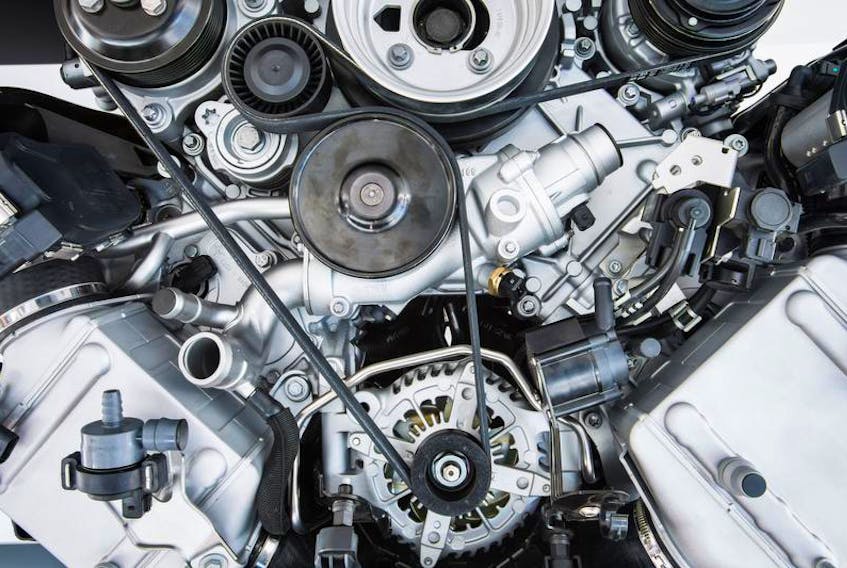There’s an old adage that says a regular blast of full-throttle is good for your vehicle’s engine.
As the logic goes, the heat, pressure and load generated helps to wash internal components, clean out deposits and otherwise incinerate harmful buildup while blowing a variety of burnt-off engine gunk out of your tailpipe.
“Throughout the service life of a gasoline engine there will be some build up of sludge, varnish and deposits in different areas,” explains Sarina Arnold, a fuels scientist at Shell.
“Engine oil contains an additive called a dispersant which helps keep the sludge suspended or dissolved in the engine oil but, if too much sludge forms and the dispersant is overwhelmed, it can lead to the sludge settling out in different areas of the engine, primarily where it’s cooler.”
Sludge can eventually build into a layer of varnish, or eventually, into thicker and harder deposits that come about as a result of heat and other factors. All engines generate the ingredients for deposits and the deposits themselves, as well as the locations where they form, are partly a function of the heat they’re exposed to in various parts of the engine.
The deposits start in the engine oil where dispersants keep the harmful particles suspended so they can be filtered out. This is a key reason for closely following factory oil change intervals and to use only factory-specified oil and filters.
Use of improper oil and filters can allow the harmful deposits to overwhelm the filter, meaning they’ll settle in other parts of the engine and grow into larger deposits.
Many variables are at play, including the design and style of engine, operating conditions and the fuel and engine oil used. Driving habits and maintenance also play a major role.
But can hard driving, possibly in the form of frequent full throttle application, actually blow the deposits out of a dirty engine?
According to Arnold, the answer is “no.”
“Modern engines are designed to resist this buildup, provided they’re maintained properly,” she says. “Service intervals are developed to ensure that the engine oils present are capable of doing the work to protect the engine. Most modern, gasoline vehicles require semi-synthetic or synthetic engine oil capable of handling ever-higher engine temperatures and protection, even at low viscosities. The best way to keep an engine clean is to utilize the fuel, engine oil, and service recommendations provided by the manufacturer.”
According to our expert, it’s not a regular “flogging” of an engine but, rather, strict adherence to maintenance schedules, that’ll work best to keep things squeaky clean.
There’s also another trick worth considering in the quest to keep your powerplant clean.
“It’s a good idea to take vehicles that are typically driven short distances at low speeds out for some longer drives to get the engine up to a normal temperature,” Arnold says.
“Not only does this better circulate the engine oil and additives through the engine to clean and protect it, but helps to move the water out of the engine oil that builds up when cars run often, but don’t heat all the way up. When water builds up in engine oil, it can result in the formation of organic acids that lead to corrosion and oil thickening.”
So, modern cars need to be driven at operating temperature, regularly, for a stretch of time that’ll allow engine oil contaminants like fuel and moisture to burn off.
Full throttle application is not required, but a good 20-minute highway cruise on a regular basis is ideal to make sure your engine gets nice and warm.
“The logic for cleaning the carbon out of an engine is seated back in the days of carbureted engines, which were less precise than the current fuel injected engines at metering in gasoline,” Arnold says. “There was some excess gasoline in these engines that would result in a build-up of “carbon” on valves and pistons that could gum them up.
“Burning it off meant running for an extended time at highway speeds to get engine temperatures and air flow high enough to “clean” off anything that could gum up the carburetors.”
Fast forward to today and this is old logic, best left for the history books.
Follow your vehicle’s maintenance schedule to a “T,” and only use the factory-specified parts and fluids, for best results.
Follow those steps carefully and take confidence that your engine is designed to take care of the rest.
“The worst thing one can do is utilize products that don’t meet the manufacturers recommended specifications, or to extend the mileage between oil changes beyond the service recommendation,” Arnold adds.
“That is a sure-fire path to premature engine performance and durability issues.”









